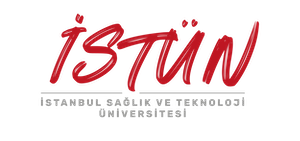| Course Objectives: |
The purpose of this course is to introduce students to the simulation method and to teach them to create computer models of discrete event systems and use these models to make decisions about real systems. For this purpose, students will learn the simulation method through courses and projects. |
| Course Content: |
This course includes the following topics: Introduction to simulation, simulation examples, general principles, simulation software, statistical models in simulation, queuing models, random number generation, random variable generation, input modeling, verification and validation of simulation models, output analysis and production for a single model. Simulation of material conveying systems. In order to enhance the learning experience, each student group will be assigned a topic related to an industrial application of the simulation method as a term project. Additionally, ARENA Simulation Package will be taught and used in the project. |
| Week |
Subject |
Related Preparation |
| 1) |
Lesson Overview, Introduction to Simulation |
Lecture Notes |
| 2) |
Simulation Examples |
Lecture Notes |
| 3) |
General Principles |
Lecture Notes |
| 4) |
Simulation Software, ARENA |
Lecture Notes |
| 5) |
Statistical Models in Simulation, ARENA |
Lecture Notes |
| 6) |
Statistical Models in Simulation, ARENA |
Lecture Notes |
| 7) |
Queue Models |
Lecture Notes |
| 8) |
Midterm |
- |
| 9) |
Queue Models |
Lecture Notes |
| 10) |
Random Number Generation, Random Variable Value Generation, Input Modeling, ARENA |
Lecture Notes |
| 11) |
Input Modeling, ARENA, Simio |
Lecture Notes |
| 12) |
Verification and Validation of Simulation Models, ARENA, Simio |
Lecture Notes |
| 13) |
Output Analysis for a Single Model, ARENA, Simio |
Lecture Notes |
| 14) |
Repetition of course topics with examples |
- |
| 15) |
Final |
- |
| Course Notes / Textbooks: |
Simulation, Sheldon Ross, 5th Edition, ISBN: 978-0-12-415825-2, Academic Press, 2013.
Simulation Modeling and Analysis with ARENA, Tayfur Altiok, Benjamin Melamed, ISBN: 978-0-12-370523-5, Academic Press, 2007. |
| References: |
Discrete-Event System Simulation, Jerry Banks, John Carson, Barry L. Nelson, David Nicol, 5th International Edition, ISBN: 9781292024370, Prentice Hall, 2014.
Simulation with ARENA, W. David Kelton, Randall P. Sadowski, David T. Sturrock, 6th International Edition, ISBN: 9781259254369, McGraw-Hill, 2015. |
| |
Program Outcomes |
Level of Contribution |
| 1) |
Adequate knowledge in mathematics, science, and related engineering discipline; ability to use theoretical and practical knowledge in these areas in complex engineering problems. |
2 |
| 2) |
An ability to detect, identify, formulate, and solve complex engineering problems; the ability to select and apply appropriate analysis and modelling methods for this purpose. |
2 |
| 3) |
An ability to design a complex system, process, device, or product to meet specific requirements under realistic constraints and conditions; the ability to apply modern design methods for this purpose. |
3 |
| 4) |
An ability to develop, select and use modern techniques and tools necessary for the analysis and solution of complex problems and an ability to use information technologies effectively inengineering applications. |
1 |
| 5) |
Ability to design, conduct experiments, collect data, analyse, and interpret results to investigate complex engineering problems or discipline-specific research topics. |
2 |
| 6) |
Ability to work effectively in disciplinary and multidisciplinary teams; ability to work individually. |
|
| 7) |
Effective verbal and written communication skills; knowledge of at least one foreign language; ability to write effective reports and understand written reports, to prepare design and production reports, to make effective presentations, to give and receive clear and understandable instructions. |
3 |
| 8) |
Awareness of the necessity of lifelong learning; ability to access information, follow developments in science and technology and ability to renew themselves. |
2 |
| 9) |
Behaving in accordance with ethical principles, awareness of professional and ethical responsibilities; knowledge of standards used in engineering applications. |
1 |
| 10) |
Knowledge about business applications such as project management, risk management and change management; awareness of entrepreneurship, innovation and sustainable development. |
2 |
| 11) |
Knowledge about universal and social effects of engineering applications on health, environment and safety; awareness about legal consequences of engineering applications. |
2 |
 Istanbul Health and Technology University
Istanbul Health and Technology University